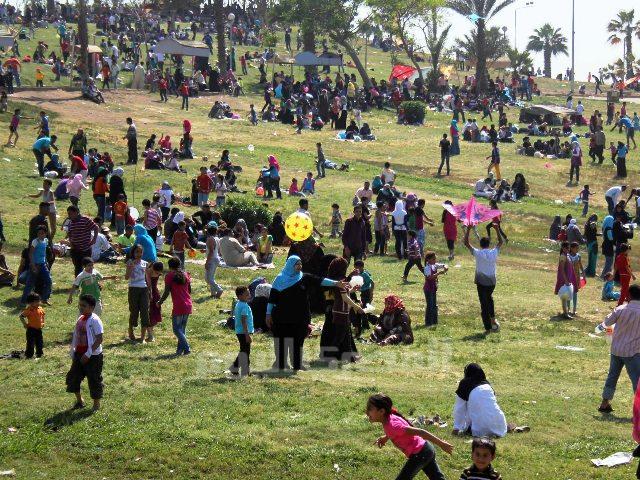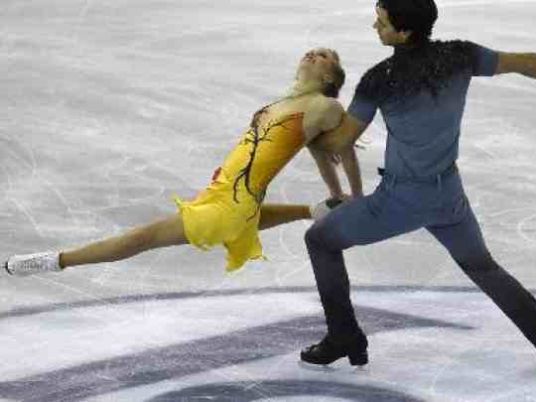
A woman shivers while she walks on stage, hardly breathing. She pretends to be fine, though, and tries to fix her makeup. All seems well for a bit until she suddenly falls to the ground, shouting, “Take me home!”
Each of the five protagonists — three women and two men of different nationalities — repeats the scene throughout the “Here/After” performance shown over the past two days at the American University in Cairo’s Falaki Theater as part of the Spring Festival. They all suffer agoraphobia.
The performance by the Dorky Park troupe is not the contemporary dance show one would normally expect. It mixes live music, dance and video with theatrical performance.
Dancer Constanza Macras and dramaturge Carmen Mehnert founded Dorky Park in 2003. They have since toured in Korea, Japan, India, Indonesia, Argentina, Brazil, Chile, Colombia, South Africa and the US, and have been invited to various European venues and festivals, like Festival d’Avignon in France and Aarhus Festival in Denmark.
In “Here/After,” the opening scene makes the audience feel they are watching a symbolic tragic choreography, while shifting through various moods. The three female protagonists, then, take their place on stage and start embodying their miseries. Two of them start singing and talking about how they became single women; they stand for the solitude and misery that control most agoraphobia patients, including the third performer, a Japanese woman, dancing in a glass box in the background.
The performance lasts for two hours. But that is not the only reason audiences feel it is long. In “Here/After,” the 20-minute scene of the performers moving fast on stage, screaming and trying to hide is repeated four times, turning the experience into a nightmare — one that viewers cannot escape. It is, however, captivating rather than boring.
The set design also helps make “Here/After” a dynamic experience. On stage, a circular platform rotates with an actor seated above on a couch. As a woman knocks a door violently, it opens and she storms in, chasing her husband. The whole set changes quickly with the glass box moving to the stage front. The sense of panic fills the stage before performers hide behind an arrangement of plant pots.
Each of the performers starts telling his story. The woman in the glass box ends her Skype call and expresses how she is scared of getting cancer. She has read online that the effects of the Fukushima power disaster persist. The Japanese government bans urine analysis, she says, because they do not want people to know how they might have been affected by the radiation. If she has a baby, it might be deformed. Hence, she decided to live in a glass box.
The German protagonist describes her feelings, growing old without a partner, and keeps telling the same old stories from the '80s, when she was much desired, while the American woman tells us how her son abandoned her after she got divorced. All the stories are those of lonesomeness, sorrow and alienation, and then we are taken through the performance one more time.




